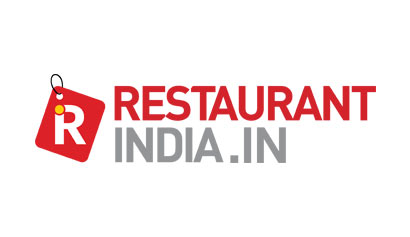To get access to over 10000+ Franchise Business Opportunities.
Network with the growing Business Community to get expert interventions to let you learn to Grow & Expand your Business with Franchising.
FRANCHISING is basically the replication of a successful business model format across locations through like-minded partners. As long as the model is self-sustainable,
FRANCHISING is basically the replication of a successful business model format across locations through like-minded partners. As long as the model is self-sustainable, workable and partners for sharing one's vision are available, one can franchise any business and malls, as relatively novel retail formats, are the perfect venues in India. However, a business intending to franchise at a mall or anywhere else must qualify the following parameters:
The business should have been successful and profitable for at least 3-4 years
The business should be manageable across locations
The business should be on a format that can be shared with like-minded entrepreneurs for implementation
If one has been running this business for 5-10 years, it must surely be profitable. To go for the franchising option, one should get a professional consultant to provide guidance through the process and also to develop a workable format. One must then try franchising the business at one mall. After running this for about a year, one is then ready to expand multifold.
Malls as franchise venues
There are conflicting opinions about the profitability of franchised brands in malls in India: Those in favor state that malls are the best places for a franchise set-up because they assure a lot of customer traffic. While those who say that mall space is too costly, those in favor rightly state that the cost of putting up a store inside a mall is proportional to the franchised name you have purchased. Brands do not franchise their name if they do not have a reputation for salability. For heavy traffic, the inside of a mall is the most viable location. It is the perfect way to merchandise one's products, even if he/she is just breaking even. In the worst-case scenario, customers will be aware of his presence.
Franchising is becoming a key part of growth patterns in Asia for many companies and India is in the middle of the retail franchise revolution. As long as the real estate market is hot and new malls are being built to feed the hunger of the expanding retail market - franchising in India will continue to thrive. Malls will continue to be the leading franchise vehicles in India, due to their popularity and ability to draw large numbers. People have got over their xenophobia regarding glitzy malls and hypermarkets, and are now aware that visiting a mall does not necessarily mean higher costs.
However, it is a mistake to assume that a high footfall rate in a mall automatically translates into increased sales for franchises. A significant number of Indian mall visitors come only to enjoy the ambience. The onus of profitability still rests on offering bargains and imaginative display.
In metros, people have started going to malls not only for shopping but for leisure, food etc. owing to a mall's ambience and the fact that it provides a number of brands and facilities under a single roof. Malls boost retailers' sales because customers who had no plans of buying their products may still do so impulsively. Lifestyle brands, in particular, benefit from this factor.
Malls benefit franchisees more in tier II/III cities than in metros. In large cities, major brands have no problems with attracting customers and therefore operating from their own premises makes sense. However, in tier II/III cities, major brands prefer to first test out the market via franchisees, since local operators are better at capitalising on local market dynamics.
Cause of worry
With malls now everywhere, most retailers are at a loss about the right mall to choose. If retailers are not well-informed about the locality, the best locality-specific product mix in a mall and the local catchment dynamics, they may choose to park themselves in a completely inappropriate mall. The fact is that many retailers do not have sufficient knowledge of such variables.
All international brands are now making inroads into India, and they are able and willing to pay any amount to obtain space in a lucratively located and outfitted mall. This jacks up the overall asking price for prime mall space, and places it out of reach for less financially endowed local players.
The only feasible correction that one can suggest is that malls should be clearly categorised. Even in a single area with 10 plus malls, making each one a niche mall for furniture, jewelry, footwear, apparel etc. would give each establishment a sort of monopoly. This would allow them to coexist and thrive without much problems. This will increase the sustainability of malls. If this does not happen, malls will close down more and more. Furthermore, malls should be adequately spaced out, with sufficient distance between each establishment. The correct distance would depend on the catchment area and the spending power of local customer, and would therefore vary from city to city.
The factors that make a mall work for retailers are its design and layout, its overall ambience, a proper brand mix which includes anchors, the presence of a multiplex, food court, a children's entertainment/recreational centre and most importantly adequate parking.
A mall owner should provide clear and visible signage to guide customers to the proper levels and shops, adequate parking and personal hygiene facilities, efficient customer baggage management and facilities for children while their parents are shopping.
The author is President, Retail Agency, Trammell Crow Meghraj.


Business Opportunities
Browse By Investment Range
Browse By States
Popular Cities















